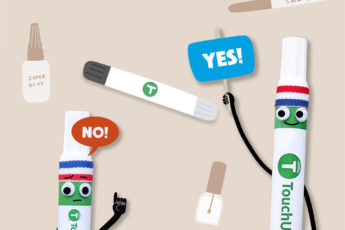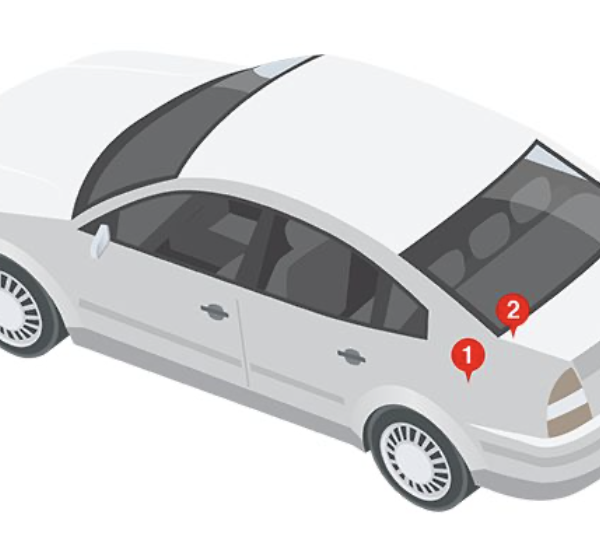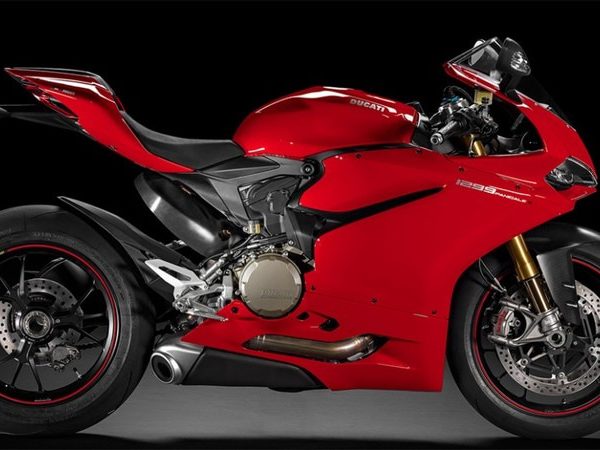Vinyl Wrap vs Paint

When to Wrap & When to Paint Your Car
Making your car look beautiful means keeping up a shiny, flawless exterior. Considering the onslaught of sun, dirt and road salt and grime that most vehicles endure year-round, maintaining this fresh-from-the-showroom look can be a daunting task, to say the least. So how do you decide between retaining its glow by applying a vinyl wrap or keeping it beautiful by using coats of traditional automotive paint?
Why Upgrade Your Vehicle’s Appearance At All?
You may have a wide variety of reasons for wanting to modify or update the look of your ride. For one, you might simply be sick and tired of the shabby or boring appearance of your vehicle. Yet you might not possess the financial means to purchase something new. The fact is that you spend a great deal of time in your car, so there is every justification to feel good about the way it looks. The good news is that there is no reason to wait for several years or until you hit the lottery before you take steps to improve the outside of your car.
Or perhaps you have the desire to give your creative juices a chance to flow. Whether you have a goal of using your vehicle for advertising purposes or just want it to look snazzy, getting a new paint or vinyl wrap job gives you a way to be as artistic as your time, money and patience will allow. No doubt about it, coming up with your own unique style will grab the attention of everyone you see as you’re driving around town. Whether you want to boost your business or enhance your social life, customizing your vehicle can catapult you to the next level.
Finally, you might want to take steps to ensure that the time and money you have devoted to your car will pay off in the long run. Whether your car is 20 years old and beautiful only to you or it is a prized vintage model that will one day fetch a tidy sum, it just makes sense to protect your investment.
An Introduction To Vinyl Wrapping
At one time, repainting vehicles or doing touch-up coats were the only ways to maintain or improve their appearance and protect them from the long-term damage that road conditions and the elements brought about. More recently, however, vinyl wraps have gained increasing popularity in the United States, Europe and Asia. Vinyl wrapping is a process that allows you to protect your vehicle’s exterior without necessarily needing to repaint it. Similar to what you would find in the case of a decal, a thin film of vinyl is applied right over your car’s paint and secured with adhesive.
You might already be familiar with the coating that manufacturers often place over a new car’s front bumper and the edge of the hood. Virtually invisible, it works to protect the car’s underside against rocks and other debris that could damage the paint. Think of a vinyl wrap as the same concept but applied to your entire vehicle and available in a multitude of colors and designs.
The Process Of Vinyl Wrapping Explained
What exactly goes into the procedure of vinyl wrapping a vehicle? First, the vinyl must be chosen and purchased. Available in 60-inch-wide rolls that measure 25 feet in length, this is usually what is required to wrap an entire car. Vinyl wrap free of graphics or designs should cost around $2500, with the installation process taking about six hours. You pay extra for labor, and the prices will vary according to your location and the difficulty of the job.
The process of vinyl wrap installation is relatively simple. To begin, you need to do your best to minimize dings and other imperfections that will show up loud and clear even after your vinyl coat has been applied. Next, take off the mirrors and molding to make vinyl application easier. Then, look at the lines of the vehicle to avoid creating seams in your adhesive, and plan the job carefully before moving forward. Using a utility knife, cut the vinyl into sections that will cover individual parts of the car. Hold it in place with tape or magnets while peeling off the backing paper. Then stick on the vinyl, moving and stretching it into the proper shape to cover all parts of the vehicle and cutting off extra edges.
Advantages Of Vinyl Wrapping
There are a few good reasons to consider vinyl wrap for your vehicle. They include the following:
- Durability. Because vinyl wrap is laminated, it is not as susceptible to UV rays as is paint, thus reducing fading over time. In addition, the thickness of the vinyl minimizes the chances of chipping or scratching, both of which are common perils with standard paint. Unlike paint jobs, vehicle wraps do not require waxing. A simple wipe with soap and water will do just fine in keeping the surface clean.
- Reasonable price. In some instances, having a car vinyl wrapped can cost just a fraction of what you would pay for a full paint job. The best example of this is race cars, whose appearance and color are often revamped, are susceptible to damage and whose sponsors often change. If you’re on a budget, particularly if you just need a small section such as the roof of your vehicle covered, vinyl wrap may be the better option.
- Time. A vinyl vehicle wrap requires only a matter of a few days to complete whereas a high-quality paint job can take two weeks to go through the entire process. In fact, people often spend more time deliberating over the design options than they do with the actual wrapping procedure. If you’re in a rush, this may be the solution for you.
- Flexibility and diversity of options. Vinyl wraps give you a tremendous amount of choice in looks and finishes. Choose a matte, gloss, semi-gloss or satin finish. In addition, you can pick among a rainbow of colors, including selections that actually shift their hue with changes in the angle of the light. Vinyl can even be manufactured to look like other types of materials including chrome, stainless steel, carbon fiber or leather.
- It’s not set in stone. If you are someone who tends to change your mind frequently, vinyl wraps have the advantage of being removable. Under optimal circumstances, taking the wrap off your vehicle does not damage the paint at all, making this an excellent option should you decide to sell your car and wish to have the paint job underneath kept pristine.
- Digital designs. The sky is the limit when it comes to the appearance of your vinyl-wrapped vehicle. Indeed, it is possible to have virtually anything printed as an exterior panorama for your car. This capability of vinyl wrapping particularly lends itself to cars that are used to advertise products, services or companies. Although the same images could be attained with standard paint, it would require a great deal of skill, customization and money to achieve the same purpose.
An Introduction To Automotive Painting
You are probably already familiar with the basics of automobile painting. Just in case you are not, it involves the following general steps:
- Strip the vehicle down to the bare metal. Although not a necessity, this is the most effective way to ensure that there are no lingering imperfections.
- Repair any body damage from rust, chipped paint, dents, etc.
- Get rid of imperfections by applying body filler. Most often, body filler is made of a plastic substance but can also be found in led or metal. Use glazing putties for small flaws. Make sure the surface is roughened with sandpaper before applying to maximize the filler’s ability to adhere.
- Seal the surface by applying a coat of primer.
- Put on color and top coats.
- Color sand to remove imperfections in your paint job. Using soapy water, a sanding block and sandpaper, you can get rid of sags, runs and minor paint flaws in this way.
- Use a multi-speed rotary buffer as the final step to put a shine on your finish.
The Advantages Of Automotive Paint
While vinyl wraps have their place, it is important to understand their limitations as well. They cannot even be successfully applied unless the underlying paint job is free of deep dents, scratches or corrosion. Although the surface does not need to be factory-quality, even the best vinyl wrap job will fail if the paint base to which it is adhered is imperfect. Without a doubt, the flaws will show through. In addition, attempting to remove the wrap from a bad paint job in the future will probably result in further unsightly damage to the look of the vehicle’s exterior.
Choosing to paint instead of wrapping your vehicle is the better option for you if your paint job has seen better days and contains a multitude of dents, scratches and other imperfections that you might not have the time, desire or means to fix yourself. It also makes sense if you are an automobile purist who wants the color of your trunk, door jambs and engine bay to match that of your vehicle’s exterior. Only a high-caliber automotive paint job will enable you to achieve this goal.
Old-school automobile purists often prefer giving their beloved vehicles the time and TLC that they believe only a well-executed paint job can impart. Many compare painting their car to laying down a hardwood floor as opposed to installing low-end linoleum. If you’re a person who actually enjoys devoting your spare time to making your vehicle shine, there is no substitute for automotive paint.
Finally, painting is the recommended option if you only need to improve the appearance of a small section of your car. In a very short time and at minimal expense, you can purchase automotive touch-up paint and get the job done with positive results. In this case, there is no need to wrap the entire thing when only a portion needs corrective attention.
Contrary to popular belief, it also takes a great deal of skill to apply vinyl wrap well, and the technology is relatively new. Depending on where you live, you might not be able to hire a professional who truly understands the intricacies of doing this quick but difficult work. By contrast, you are far more likely to be able to find someone who can do a high-end paint job.
The Bottom Line: When To Wrap And When To Paint
Now that you have gotten to this point in the discussion, it’s time to decide which method to use to improve your vehicle’s exterior.
Choose vinyl wrap if:
- You already have a good paint job and want to protect it for future resale purposes.
- You want fancy designs or advertising graphics and don’t feel like custom-painting them.
- You want the job done in days not weeks.
- You will probably be wishing to change the design frequently.
- You are seeking extra durability, especially if you live in an area where the elements are harsh.
Painting is recommended if:
- You only need to touch up small sections.
- Your current paint job is already so damaged that you would need to pay for a new one anyway even before installing vinyl wrap.
- You are a purist who wants to restore your ride to factory condition, with even hidden parts perfectly color matched.
- No one in the area where you live has the skill to apply vinyl wrap properly.
There are tons of good reasons for taking steps to beautify the exterior of your vehicle. Doing so protects your investment, safeguarding your car against damage and even potentially increasing its resale value. Furthermore, even if you don’t use your wheels for commercial purposes, you can’t help but feel a lift in your spirits if your ride looks spectacular. A robust, high-quality paint job will provide the foundation upon which you can do regular touch-ups or even embark on a project of applying a vinyl wrap. No matter how you slice it, taking the time to ensure that your paint job is smooth and free of imperfections is the best way to take your vehicle to the next level – no matter how you decide to improve its appearance.

 Cart
Cart  Help Desk
Help Desk 






